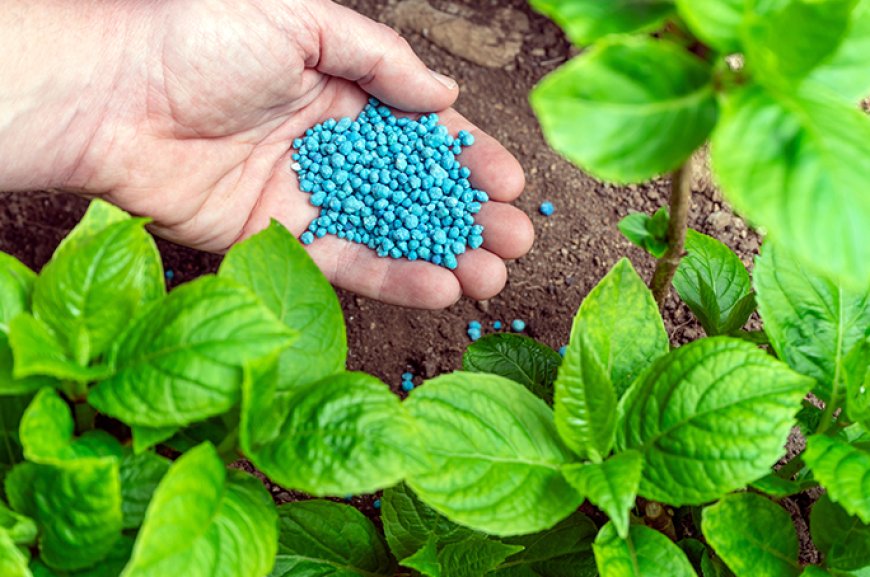How Do Different Plants Have Varied NPK Requirements?

Understanding the NPK requirements of different plants is crucial for successful gardening and agriculture. NPK stands for Nitrogen (N), Phosphorus (P), and Potassium (K), the three primary nutrients that plants need to grow. These nutrients play distinct roles in plant development, and their optimal levels vary significantly among different plant species. As Organic Soil Conditioner, In this article, we will delve into the varied NPK needs of different plants and how you can manage these requirements to ensure healthy and productive growth.
The Importance of NPK in Plant Growth
Nitrogen (N): The Growth Booster
Nitrogen is essential for plant growth, particularly in promoting leafy, vegetative development. It is a major component of chlorophyll, the compound that plants use in photosynthesis to convert sunlight into energy. Plants with adequate nitrogen tend to have lush, green foliage. However, too much nitrogen can lead to excessive leaf growth at the expense of flowers and fruit.
Phosphorus (P): The Root Developer
Phosphorus is critical for root development and energy transfer within the plant. It is a part of DNA, RNA, and ATP (adenosine triphosphate), which are vital for energy transfer. Phosphorus helps plants establish a strong root system, promotes flowering, and improves overall plant health. A deficiency in phosphorus can result in stunted growth and poor flowering.
Potassium (K): The Health Enhancer
Potassium is involved in many physiological processes within the plant, including water regulation, enzyme activation, and photosynthesis. It helps improve disease resistance, water uptake, and overall plant health. Plants deficient in potassium may show weak stems, poor root development, and increased susceptibility to diseases.
Understanding Varied NPK Needs
Different plants have unique NPK requirements based on their growth habits, developmental stages, and environmental conditions. Here, we will explore the specific needs of some common plant categories.
Vegetables and Leafy Greens
High Nitrogen Requirements
Vegetables such as lettuce, spinach, and kale thrive on higher nitrogen levels. This is because nitrogen promotes the lush, leafy growth that these plants are known for. A balanced NPK ratio for leafy greens might be 10-5-5, indicating a higher proportion of nitrogen to support foliage development.
Moderate Phosphorus and Potassium
While nitrogen is crucial, phosphorus and potassium should not be neglected. Phosphorus supports root development, especially in young plants, while potassium helps with overall plant health and disease resistance. For vegetables like tomatoes and peppers, a more balanced ratio such as 5-10-10 is often recommended to support both fruit and root development.
Fruit-Bearing Plants
High Phosphorus Needs
Fruit-bearing plants like tomatoes, strawberries, and cucumbers require higher levels of phosphorus, especially during flowering and fruiting stages. Phosphorus promotes flower formation and fruit set. A typical NPK ratio for fruit-bearing plants might be 5-10-5.
Balanced Nitrogen and Potassium
While phosphorus is key, nitrogen and potassium are also important. Nitrogen supports vegetative growth, ensuring the plant has enough foliage to support fruit production. Potassium enhances fruit quality and disease resistance, which is critical for healthy harvests.
Root Vegetables
Phosphorus for Root Development
Root vegetables such as carrots, beets, and potatoes have significant phosphorus needs. Phosphorus encourages strong root growth, which is essential for these crops. An NPK ratio like 5-15-10 can be beneficial for promoting robust root systems.
Moderate Nitrogen and High Potassium
Excessive nitrogen can lead to lush foliage but poor root development in root vegetables. Therefore, moderate nitrogen levels are ideal. High potassium levels help improve root quality and disease resistance, essential for root crops.
Flowering Plants
Balanced NPK for Flowering
Flowering plants, including annuals and perennials, require a balanced NPK ratio to support both foliage and flower development. A ratio of 10-10-10 or 5-10-5 is often suitable, providing balanced nutrients for overall plant health.
Phosphorus for Blooms
Phosphorus is particularly important for flowering plants, as it promotes bloom development. Ensuring adequate phosphorus levels can lead to more vibrant and abundant flowers.
Tailoring NPK for Specific Plant Needs
Soil Testing: The First Step
To determine the specific NPK needs of your plants, soil testing is essential. Soil tests provide valuable information about nutrient levels and pH, helping you tailor fertilization practices to your plants' needs.
Using the Right Fertilizers
Once you know your soil's nutrient profile, choose fertilizers that match your plants' NPK requirements. Organic fertilizers such as compost and manure can improve soil structure and provide balanced nutrients. Synthetic fertilizers offer precise NPK ratios for targeted feeding.
Seasonal Adjustments
Plants' NPK needs can change with the seasons. For example, leafy greens may require more nitrogen in the spring for vigorous growth, while fruiting plants may need more phosphorus during their flowering stage. Adjust your fertilization practices accordingly to meet these changing needs.
Conclusion
Understanding and managing the varied NPK requirements of different plants is key to successful gardening and agriculture. By providing the right balance of nitrogen, phosphorus, and potassium, you can ensure healthy, productive plants. Regular soil testing and careful selection of fertilizers can help you meet your plants' nutritional needs, leading to bountiful harvests and beautiful gardens.
What's Your Reaction?


























